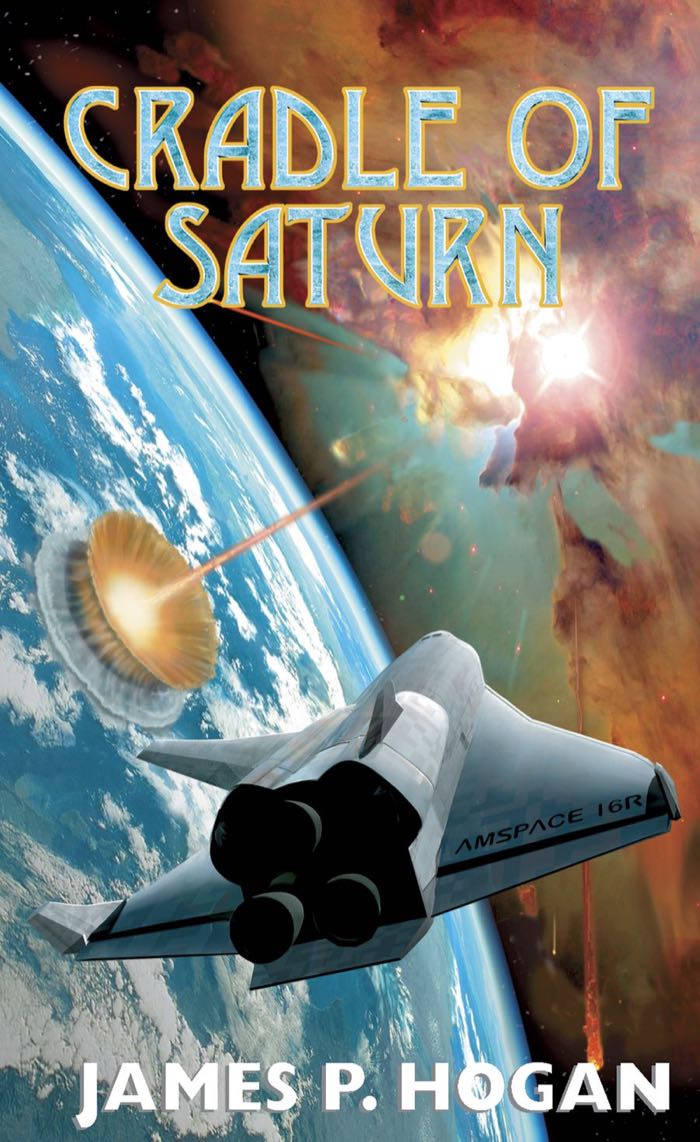Cradle of Saturn
Series: Cradle of Saturn 1
Reviewed date: 2012 Jun 4
Rating: 2
544 pages
Immanuel Velikovsky
I'd never heard of Velikovsky, but he made a splash a few decades ago with his scientific and historical framework proving a young, 6000-year-old Earth. In brief, his ideas are: geological and archaeological evidence suggests Earth has suffered a number of devastating cataclyms in recent history. The source of each cataclysm is a near encounter with a planetary object. This requires a new theory of celestial mechanics where electromagnetic forces quickly alter the orbits of planets.
In particular, Earth was once a moon of Saturn. Its tidally-locked orbit resulted in a lower gravity, which allowed creatures (that is, dinosaurs) to grow to titanic proportions. When Earth's orbit shifted to its present location, gravity increased, causing mass extinction of the large dinosaurs that could not support their own weight in the increased gravity.
Further, Venus is a newcomer to the solar system, having been ejected from the core of Jupiter a mere 3500 year ago.
Cradle of Saturn
What if Velikovsky was right? That's the premise of Hogan's Cradle of Saturn. The scientific establishment would have to be willfully blind to ignore the evidence of Velikovskian geology and cosmology, so Hogan shows us world of scientists more interested in finagling government grants than in true research. Then Jupiter spits out a comet the size of a small planet--unexplainable by conventional science but perfectly in line with Velikovsky's model. The scientists still refuse to consider any new theories.
Tedium
For over 100 pages, Hogan recounts the life of a scientific bureaucrat. Landen Keene makes phone calls, leaves voicemail messages, listens to messages, reads emails, and listens to his secretary give him messages. He debates the establishment scientists and tries to get somebody--anybody--to listen to these new ideas about the solar system. But nobody listens. It is exceedingly dull.
Doomsday
Then, Athena, the large comet that Jupiter expelled, changes its orbit and heads for Earth. The conventional science is clearly wrong, and the previously bull-headed establishment scientists do have the grace to admit their mistake. Things get interesting, sort of: Landen Keene spends the next couple hundred pages on a political mission: the bad scientists attempt to hijack a space shuttle and escape to the Kronian colony on Titan, but Keene thwarts them.
And none of it mattered
Keene spends the final third of the book traveling from California to Texas and then across the border into Mexico, where his company's rocket is waiting to take him off Earth into space. Conditions deteriorate rapidly: Athena's close pass is moving oceans and drowning entire continents. Earth is doomed. On Earth there will be no survivors. So the whole earlier part of the book--the scientific debates and the mission to thwart the bad scientists--doesn't matter. Earth was doomed all along.
Kronia
A few humans will survive on the Kronian colony on Titan. Landen Keene and a few others escape Earth on shuttles and join the Kronians. But although that's great news for Keene, it doesn't matter to the big picture. Billions of people dead, Earth wiped clean. One small colony of humans eking out an existence among the moons and rings of Saturn.
The verdict
A tedious book where the actions of the characters have no meaningful impact whatsoever. I didn't find Cradle of Saturn satisfying.
